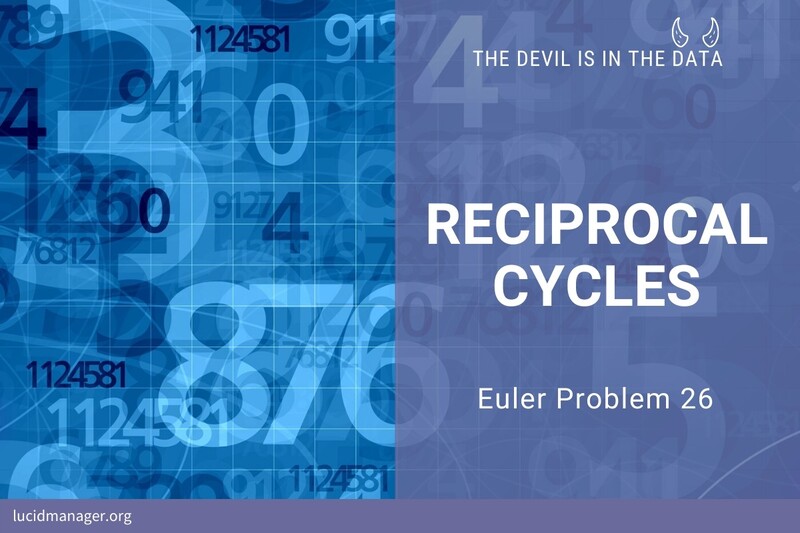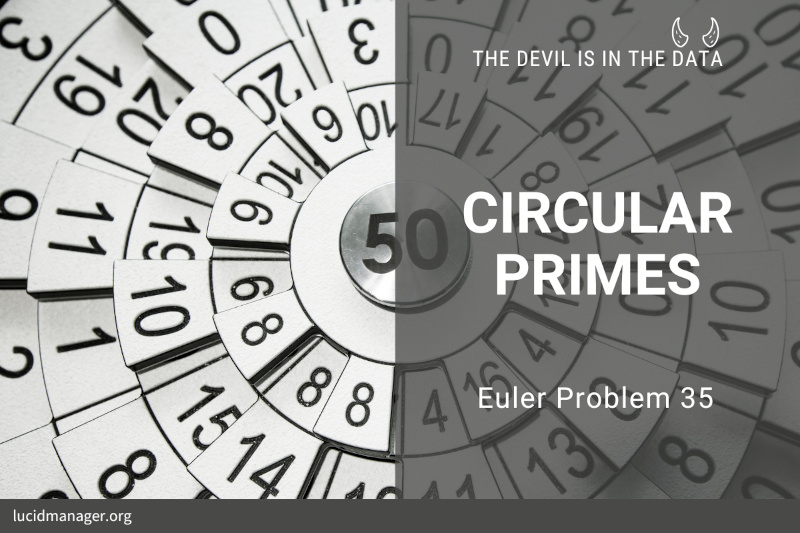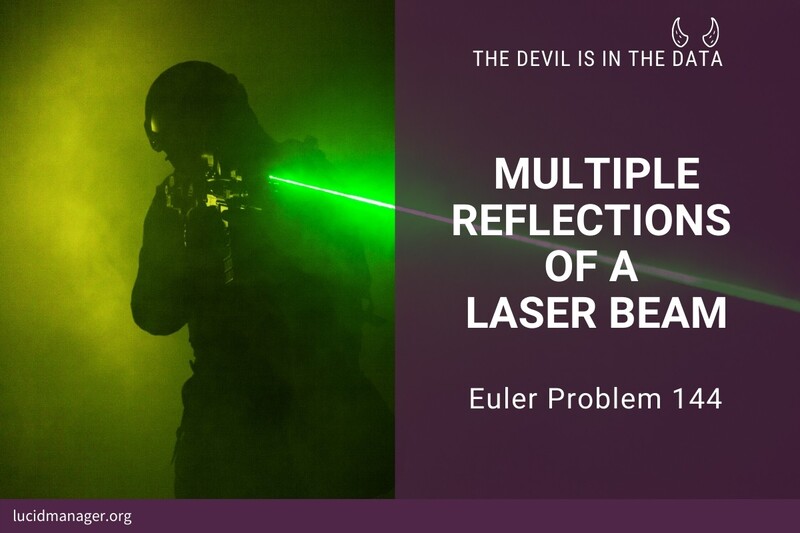
Project Euler 26: Reciprocal Cycles

Peter Prevos |
600 words | 3 minutes
Share this content
Project Euler 26 delves into a topic many kids in primary school dread: fractions. A few years ago, a fraction broke the internet. What happens when you divide 1 by 998001?
$$\frac{1}{998001} = 0.000001002003004005006007008009010011012013014015 \ldots$$
What is unique about this fraction is that it lists every three-decimal number except for 998. Look carefully at the sequence to see that is 000, 001, 0002, 003, 004, 005 and so on. After it has reached 999, the sequence continues from the start. This fraction thus has 2997 recurring decimals. James Grime from Numberphile explains this mathematical oddity with his usual enthusiasm.
The decimal fraction of 1/998001 is a recurring decimal. These are decimal numbers with periodic digits (repeating its values at regular intervals).
Project Euler 33 is also about fractions and asks us to analyse recurring decimals (reciprocal cycles) and Ford Circles.
Project Euler 26 Definition
A unit fraction contains 1 in the numerator. The decimal representation of the unit fractions with denominators 2 to 10 are given:
1/2 = 0.5
1/3 = 0.(3)
1/4 = 0.25
1/5 = 0.2
1/6 = 0.1(6)
1/7 = 0.(142857)
1/8 = 0.125
1/9 = 0.(1)
1/10 = 0.1
Where 0.1(6) means 0.166666… and has a 1-digit recurring cycle. It can be seen that 1/7 has a 6-digit recurring cycle. Find the value of d < 1000 for which 1/d contains the longest recurring cycle in its decimal fraction part.
Proposed Solution
Sequence A051626 in the On-Line Encyclopaedia of Integer Sequences describes the length of the recurring numbers in 1/n. To solve Euler Problem 26, we need to generate the first 1000 numbers of this sequence and find out which number has the longest recurring cycle.
R can only display up to 22 decimals by using options(digits=22). The base R capability is unsuitable for solving this problem, so I wrote some code to perform long division the old-fashioned way.
The recur() function divides 1 by any arbitrary integer. The code continues until the decimal terminates, for example 1/4 = 0.25, or when a recurring pattern emerges, e.g. 1/7 = 0.(142857).
The function has two arguments: n is the input number. The output argument determines the outcome of the function: “=len=” for the length of the recurring decimals. Any other value shows the result of the calculation. The output of the function is a string. Using the European notation, the recurring part of the decimals is shown between brackets, e.g. 1/14 = 0.0(714285).
## Project Euler 26: Reciprocal Cycles
recur <- function(x, output = "") {
# Prepare variable
if (x == 0) return(NaN)
if (x == 1) return(0)
x <- floor(abs(x))
# Initiate vectors to store decimals and remainders
dec <- vector()
rem <- vector()
# Initiate values
i <- 1
r <- 10
rem <- r
# Long division
repeat {
dec[i] <- floor(r / x)
r <- 10 * (r %% x)
# Test wether the number is terminating or repeating
if (r == 0 | r %in% rem) break
rem[i + 1] <- r
i <- i + 1
}
# Determine number of recurring digits
rep <- ifelse(r != 0, length(rem) - which(r == rem) + 1, 0)
# Output
if (output == "len")
return(rep)
else {
if (rep != 0) {
if (rep == length(dec))
l <- "("
else
l <- c(dec[1:(length(dec) - rep)], "(")
dec <- c(l, dec[(length(dec) - rep + 1):length(dec)], ")")
}
return(paste0("0.", paste0(dec, collapse = "", sep = "")))
}
}
A051626 <- sapply(1:1000, recur, "len")
answer <- which.max(A051626)
print(answer)
recur(998001, "len")
recur(998001)Share this content


